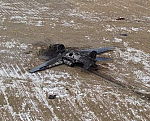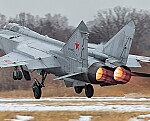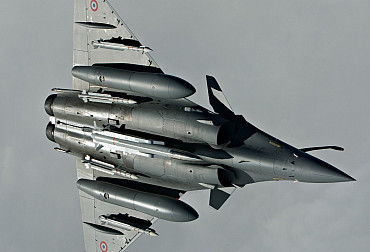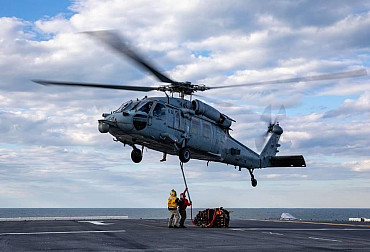Italy’s AW249 helicopter enters production phase: A game-changer for modern warfare
Italy's next-generation combat helicopter program, the AW249, is advancing steadily as the country prepares to enter the production phase. With 17 units already under contract out of the planned fleet of 48, the Italian Army is on track to receive the first deliveries by 2027. The development and testing of this modern attack helicopter mark a significant milestone in Italy’s defense modernization strategy.
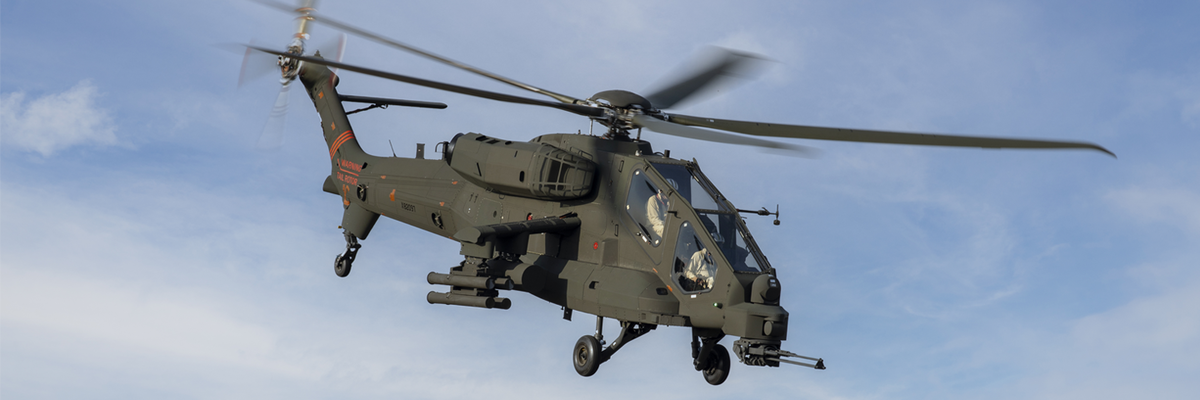
A Cutting-Edge Successor to the A129 Mangusta
Designed to replace the aging A129 Mangusta, the AW249 represents a leap forward in combat helicopter technology. Featuring advanced avionics, enhanced survivability, and a more powerful drivetrain, the new aircraft aims to provide superior firepower and operational capability in modern warfare scenarios. The AW249 is engineered to excel in high-intensity conflicts and asymmetric engagements, reinforcing Italy’s military readiness for the future.
Equipped with state-of-the-art sensors, targeting systems, and electronic warfare capabilities, the AW249 ensures increased battlefield awareness and engagement effectiveness. Its modular architecture allows for future upgrades, ensuring longevity in service and adaptability to emerging threats. The helicopter's increased payload capacity also enables it to carry a more diverse range of munitions, including guided missiles and precision-strike weaponry, making it a formidable force on the battlefield.
Extensive Testing and Development Underway
According to Italian parliamentary reports, four AW249 prototypes are currently undergoing rigorous evaluation. Among them, one is classified as the primary prototype, while the remaining three serve as pre-production models. These aircraft, despite being officially owned by the Italian Army, will remain under the supervision of Leonardo, the manufacturer, to facilitate further capability development.
A key focus of this phase is refining the helicopter’s weapon systems and avionics. Weapons testing commenced in November 2023, with trials covering the performance of its 20mm cannon and unguided rocket systems. These evaluations are critical in ensuring that the AW249 is combat-ready, particularly for close air support and escort missions. Additional testing is expected to include integration of guided missiles and air-to-air weaponry, allowing for greater versatility in combat situations.
The testing program is also evaluating the AW249’s flight performance under various environmental conditions, including extreme temperatures and challenging terrain. This ensures that the helicopter remains operational in a wide range of scenarios, from urban warfare to mountainous regions and maritime environments.
Strengthening Italy’s Military Capabilities
The AW249 project aligns with Italy’s broader objective of modernizing its rotary-wing aviation fleet. By integrating advanced situational awareness capabilities and ensuring interoperability with NATO allies, the program is designed to keep Italy at the forefront of military aviation technology. The helicopter’s ability to adapt to evolving battlefield conditions makes it a crucial asset for both national defense and international operations.
Beyond its combat capabilities, the AW249 also includes provisions for network-centric warfare, enabling seamless data sharing with other air and ground units. This level of integration significantly enhances coordination during joint operations, improving mission effectiveness and overall situational control.
With production and testing progressing as planned, Italy’s commitment to maintaining operational superiority through innovation in defense technology is evident. The AW249 is poised to become a game-changer for the Italian Army, enhancing its combat capabilities and reinforcing its strategic position in modern warfare.
Future Prospects and Strategic Importance
As the program moves forward, further refinements in weapons systems and avionics will continue, ensuring that the AW249 meets the highest operational standards before its official deployment. The helicopter is expected to provide a significant boost to Italy’s defense capabilities, securing its role in future NATO and coalition missions.
In addition to domestic deployment, the AW249 may attract interest from international buyers. With growing demand for next-generation attack helicopters, Italy has an opportunity to position the AW249 as a viable export option, contributing to both economic and strategic partnerships worldwide. Leonardo’s strong track record in the defense sector adds credibility to this potential expansion.
Furthermore, the AW249’s development reflects a broader trend in European defense cooperation. As NATO member states seek to modernize their armed forces, platforms like the AW249 could form part of collaborative efforts to strengthen regional security. Its interoperability with allied forces ensures it can operate seamlessly alongside other NATO assets, reinforcing Italy’s commitment to collective defense.
The next few years will be crucial in determining the AW249’s long-term impact. If testing continues successfully and production remains on schedule, the Italian Army will soon field one of the most advanced attack helicopters in the world. The AW249 is not just a replacement for the A129 Mangusta—it is a symbol of Italy’s strategic vision for the future of aerial warfare.





